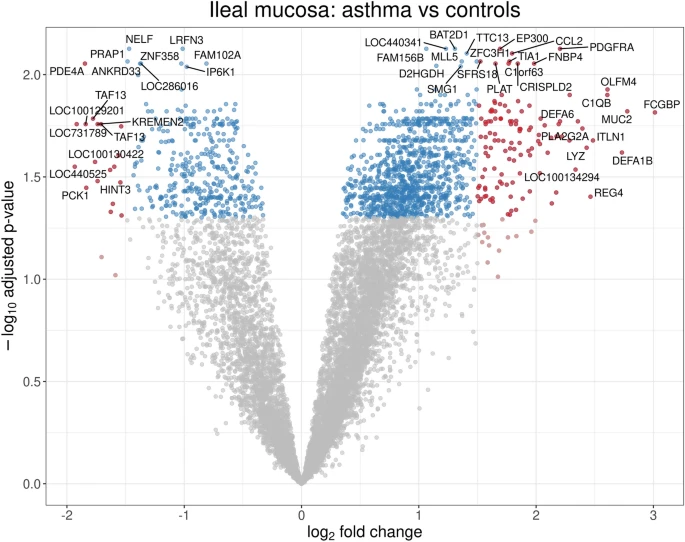Research – Open Access
Jan K. Nowak, Marzena Dworacka, Nazgul Gubaj, Arystan Dossimov, Zhumabek Dossimov & Jarosław Walkowiak
Allergy, Asthma & Clinical Immunology volume 17, Article number: 82 (2021)
Abstract
Background
The expression profiles of the intestinal mucosa have not been comprehensively investigated in asthma. We aimed to explore this in the Correlated Expression and Disease Association Research (CEDAR) patient cohort.
Methods
Differential expression analysis of ileal, transverse colon, and rectal biopsies were supplemented by a comparison of transcriptomes from platelets and leukocytes subsets, including CD4+, CD8+, CD14+, CD15+, and CD19+ cells. Asthma patients (n = 15) and controls (n = 15) had similar age (p = 0.967), body mass index (p = 0.870), similar numbers of females (80%) and smoking rates (13.3%).
Results

Significant differential expression was found in the ileum alone, and not in any other cell/tissue types. More genes were found to be overexpressed (1,150) than under-expressed (380). The most overexpressed genes included Fc Fragment of IgG Binding Protein (FCGBP, logFC = 3.01, pFDR = 0.015), Mucin 2 (MUC2, logFC = 2.78, pFDR = 0.015), and Alpha 1B Defensin (DEFA1B, logFC = 2.73, pFDR = 0.024). Gene ontology implicated the immune system, including interleukins 4 and 13, as well as antimicrobial peptides in this overexpression. There was concordance of gene over- (STAT1, XBP1) and underexpression (NELF, RARA) in asthma and Crohn’s disease ileum when our results were compared to another dataset (p = 3.66 × 10–7).
Conclusion
Ileal mucosa in asthma exhibits a specific transcriptomic profile, which includes the overexpression of innate immune genes, mostly characteristic of Paneth and goblet cells, in addition to other changes that may resemble Crohn’s disease.
